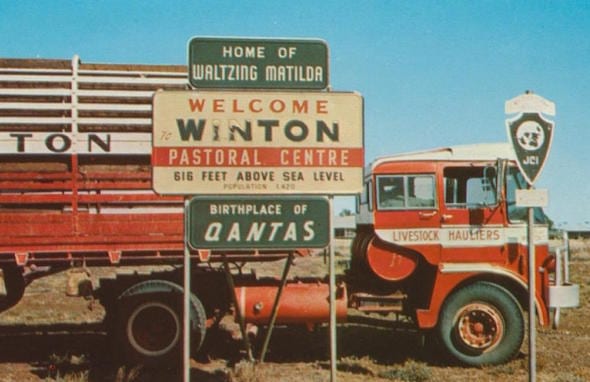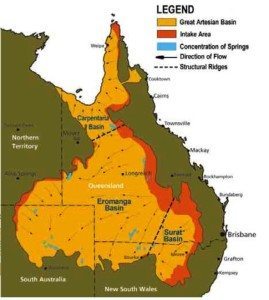The outback Queensland Shire of Winton will soon power all of its local government buildings and infrastructure using locally sourced renewable energy, after the council waved through plans to build two geothermal plants with a total 300kW capacity.
It is part of an ambitious plan by the council to tap into geothermal energy and create their own networks to supply their own locally generated power to council buildings – an idea that could be adopted by neighbouring councils.
The project has been in the planning for months now, after Winton Shire Council asked Queensland-based group LGIS to investigate the feasibility of tapping the hot artesian bore water that flows under the town in the state’s central west.
The decision to go ahead with the geothermal project – a decision LGIS’s director of business solutions, Clinton Parker, described as “commercially based” – was backed by the council last week, in a resolution to put $3.5 million of local government funds towards the design and construction of two 150kW plants.
Winton Shire Mayor, “Butch” Lenton, said the bores – a part of the Great Artesian Basin – were found to be “really suitable” for the latest geothermal energy technology, providing water at a temperature of 86°C, and at a flow rate of 72 litres per second.
He says the plants, that would be used mainly to power council infrastructure first up, could save the council as much as $400,000 a year – and ultimately millions – once they were up and operational, at the end of 2016.
LGIS, a company that specialises in local government infrastructure projects, says this sort of geothermal resource – a vastly different affair to the deep, hot-rock geothermal that has so far failed to take off in Australia – has many obvious advantages, including the ability to provide reliable baseload power.
“A geothermal plant can be configured to match the peak and load shape of the demand required,” Parker said in an interview. For this reason, he said, geothermal was a more reliable and more efficient option for Winton than, say, solar plus storage, and therefore a better commercial option.
“There are a number of things that make this an interesting project,” said Parker, who stressed that solar and battery storage remained the best choice for many other councils, who didn’t have access to geothermal.
It is a first in Australia, he said, which is one of the only continents that hasn’t yet embraced its natural thermal energy resource; it is a commercially-motivated project; and it is helping a remote community gain energy autonomy.
“What Winton are doing is quite unique – to build a geothermal plant and create their own network to supply power to council buildings, which has never been done before, particularly with geothermal,” Parker told ABC Online in March.
“We know that there is a geothermal plant in (the nearby town of) Birdsville that services the community, whereas this is actually built specifically for the purposes of powering council.
“Winton is a small council taking on an interesting project, and unlike Ergon it doesn’t have the same resources as a large energy provider.”
 And the project has sparked interest among Winton Shire’s neighbours. LGIS is now in discussions about geothermal options with a total of eight towns in the region – all of which are located on the Great Artesian Basin, and one of which is already in the concept design phase.
And the project has sparked interest among Winton Shire’s neighbours. LGIS is now in discussions about geothermal options with a total of eight towns in the region – all of which are located on the Great Artesian Basin, and one of which is already in the concept design phase.
“There’s a lot of momentum, especially with Winton Council passing the funding resolution,” Parker said. “It offers (other councils) a clear direction on how to progress.”
For Mayor Lenton, one of the best things about the project is that it means precious council resources can be freed up to go towards other things for the community, which has recently experienced drought and economic harship.
“At 54,000 square km, and 1400 people, (Winton Shire) hasn’t got a big rate base, so we’ve got to try and work around things.
“The geothermal has been around for a long time, and this work with LGIS a great project going forward,” Lenton said over the phone.
We’re happy living here and we wish to keep living here, so we’ve got to work out a way to make it work. This is a sustainable solution.”
Check out RenewEconomy’s new sister site, focusing on consumer stories, at One Step Off The Grid









